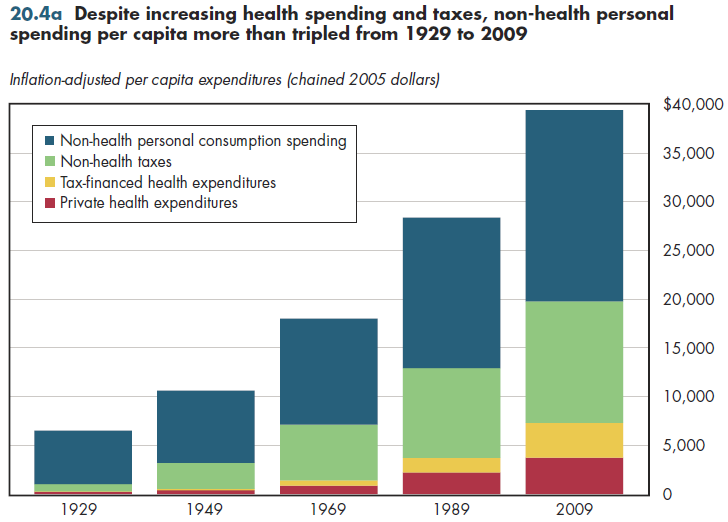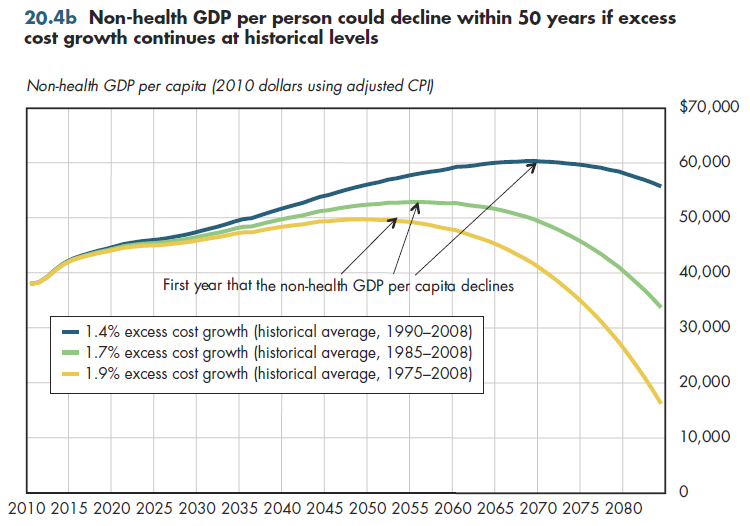Download PowerPoint versions of both figures.
20.4 Projected Real GDP per Capita Will Decline within 30 Years Due to Growth in Health Spending
Summary: Over the next 50 years, the country can "afford" growth in health spending that exceeds growth in the general economy only if the difference is not too much. Continuing historical rates of excess growth in health spending could result in a decline in real GDP per capita within 30 years.
After deducting amounts for health care, the inflation-adjusted amount of personal consumption spending per American more than tripled in the 80 years since 1929 (figure 20.4a). Despite enormous growth since 1929 in health spending and the size of government—both of which reduced the amount that otherwise would have been available for personal consumption—what Americans had left for everything else still was able to grow. Admittedly, what was left would have been twice as large in a world without any spending on health care or government. No one aspires to live in such a hypothetical world. The purpose of figure 20.4a is to illustrate that the growth in health care (and government) has not been so rapid that it reduced the American standard of living from generation to generation.

However, the United States cannot afford a continuation of historical rates of excess cost growth unless Americans are comfortable with a decline in non-health GDP per capita within the next 75 years. How quickly that occurs will depend on which historical excess cost growth number is used.
Using actual experience from relatively recently (1990-2008), annual excess cost growth was 1.4 percent. Continuing this into the future would produce a downturn in inflation-adjusted non-health spending per capita in the year 2070 (figure 20.4b). However, extrapolating the experience of 1975-2008 (1.9 percent excess cost growth) would result in a decline in real GDP per capita by 2053. This downturn would be so sharp that health care would absorb all of GDP by 2090.

Because people have to have food, clothing, and shelter, 100 percent of GDP logically can never be fully devoted to health care. These projections are not predictions because they lack assumptions about changes in policy or behavior. Their use lies in demonstrating how much of a change in experience is required to "bend the cost curve" enough to avoid an undesirable outcome.
Downloads
References
- Author's calculations.
- Congressional Budget Office.
- Department of Commerce. Bureau of Economic Analysis.
- Department of Commerce. Bureau of the Census.
- Department of Health and Human Services. Centers for Medicare and Medicaid Services.
- Social Security Administration.
- Worthington NL. National Health Expenditures, Calendar Years 1929-73. Research and Statistics Note No 1. Office of Research and Statistics 1975.
Content actions
Give feedback:
Add module to:
Reuse / Edit:
Twin Cities Campus:
- © 2012 Regents of the University of Minnesota. All rights reserved.
- The University of Minnesota is an equal opportunity educator and employer. Privacy
- Last modified on Sep 24, 2013 3:07 pm -0500









